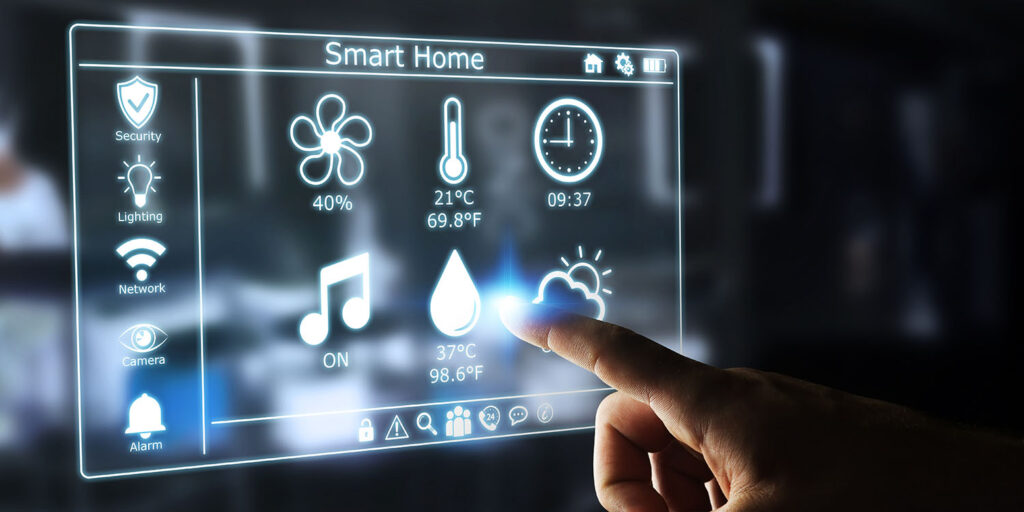
Integrating Smart Appliances with Hubs: A Comprehensive Guide
In today’s rapidly evolving technological landscape, the concept of a smart home has become increasingly popular. Central to this idea is the notion of integrating smart appliances with hubs. By doing so, homeowners can enjoy a more seamless and efficient living experience, where devices communicate and work together to enhance comfort and convenience.

What Are Smart Appliances?
Smart appliances are devices connected to the internet, allowing users to control them remotely via smartphones or other devices. These appliances can include everything from refrigerators and ovens to washing machines and thermostats. By connecting to a hub, these devices can interact with each other and be controlled from a single platform, making home management more straightforward.
The Role of Hubs in Smart Homes
A smart home hub serves as the central point of connection for all smart devices in a home. It allows different devices to communicate, even if they come from different manufacturers. This is crucial for ensuring that all devices work harmoniously, providing an integrated experience for the user.
Benefits of Using Smart Hubs
The primary benefit of using a smart hub is the ability to control multiple devices from a single interface. This can simplify the user experience and make managing a smart home more intuitive. Additionally, hubs can automate various tasks, such as turning off lights when no one is home or adjusting the thermostat based on the weather.
How to Integrate Smart Appliances with Hubs
The process of integrating smart appliances with hubs can vary depending on the specific devices and hub being used. Generally, the first step is to ensure that all devices are compatible with the hub. Once compatibility is confirmed, devices can be connected to the hub via Wi-Fi or Bluetooth. After connection, users can control and automate their appliances through a dedicated app or voice commands.
Choosing the Right Hub
When selecting a hub, it’s essential to consider compatibility with existing devices, ease of use, and the range of features offered. Popular options include the Amazon Echo, Google Nest Hub, and Samsung SmartThings Hub. Each of these hubs offers unique features and capabilities, so it’s essential to choose one that fits your specific needs.
Challenges in Integration
While the idea of a fully integrated smart home is appealing, there are several challenges to consider. Compatibility issues can arise when devices from different manufacturers do not work well together. Additionally, the initial setup process can be complex, requiring technical knowledge and patience.
Overcoming Compatibility Issues
To address compatibility issues, it’s advisable to choose devices and hubs that support open standards, such as Zigbee or Z-Wave. These standards allow devices from different manufacturers to communicate effectively, reducing the chances of compatibility problems.
Security Concerns
Security is a significant concern when it comes to smart home integration. With appliances connected to the internet, there is a risk of hacking and unauthorized access. To mitigate these risks, homeowners should use strong passwords, enable two-factor authentication, and regularly update their devices’ firmware.
Protecting Your Smart Home
To protect your smart home, it’s essential to keep all devices updated with the latest security patches and to use a secure network. Additionally, consider using a dedicated router for smart devices to isolate them from other network traffic.
The Future of Smart Home Integration
As technology continues to advance, the integration of smart appliances with hubs will become even more sophisticated. We can expect to see more devices with built-in AI capabilities, allowing for greater automation and personalization. Additionally, the development of new communication protocols will make it easier for devices to work together seamlessly.
Emerging Trends
One of the most exciting trends in smart home integration is the rise of voice-activated assistants. Devices like Amazon Alexa and Google Assistant are becoming increasingly popular, allowing users to control their homes with simple voice commands. This trend is likely to continue as more devices become compatible with voice control.
Conclusion
Integrating smart appliances with hubs offers numerous benefits, including increased convenience, efficiency, and automation. While there are challenges to consider, such as compatibility and security concerns, the potential advantages make it a worthwhile endeavor for any homeowner looking to modernize their living space.

FAQs
What are the benefits of integrating smart appliances with hubs?
Integrating smart appliances with hubs allows for centralized control, automation, and improved efficiency of household tasks. It can also enhance convenience and energy management.
How do I choose the right smart hub?
When choosing a smart hub, consider compatibility with your devices, ease of use, and the range of features offered. Popular options include Amazon Echo, Google Nest Hub, and Samsung SmartThings.
Are there security risks associated with smart home integration?
Yes, there are security risks such as hacking and unauthorized access. To mitigate these risks, use strong passwords, enable two-factor authentication, and keep devices updated.
For more information on smart homes, visit Constellation Energy.
Check out our other articles on smart home solutions, multi-room audio setup, and smart alarm clock benefits at The Good Home.
This article contains affiliate links. We may earn a commission at no extra cost to you.